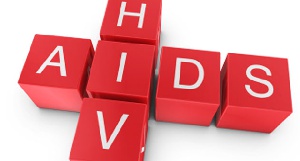The 2014 sentinel survey has revealed that the HIV prevalence rate in the Upper West Region has increased from 0.8 per cent in 2013 to 1.3 per cent in 2014.
Dr Musheibu Mohammed Alfa, Deputy Regional Minister, revealed this during a Regional Stakeholders’ Consultative Meeting on the first 90 campaign on HIV and AIDS in Wa.
He noted that the location of the region makes it vulnerable to new infections as it shares borders with neighbouring Burkina Faso and Cote d’Ivoire, coupled with brisk inter-boundary trade and constant movement of people across the borders.
Dr Alfa stated that it is, therefore, pertinent for the region to adapt different forms of approaches in education and information dissemination to reduce the risk of new infections and guarantee a healthy population.
He reminded the stakeholders that government has not relented on its efforts in the fight against HIV and AIDS in the areas of prevention, treatment, care and support.
“Government, through its various organisations, institutions and agencies, is undertaking various intervention activities not only to create the much-needed awareness but also to ensure that we get the…public to adopt non-risky behaviours that will prevent them from being infected by the disease,” he said.
He expressed optimism that the ongoing stakeholders’ meeting on the 90-90-90 campaign would equip the people with the necessary knowhow to arrest the continuous spread of the disease.
Dr Alfa, therefore, encouraged all to share their vast experiences and knowledge so that they could develop an impeccable work plan and formulate innovative approaches to address the remaining challenges.
This would ensure that no one is left behind as we move towards the implementation of the 2016-2020 National Strategic Plan for HIV and AIDS and ultimately towards achieving the 90-90-90 targets, he added.
Dr Angela El-Adas, Director General of the Ghana AIDS Commission, said the UNAIDS has set a long-term vision to end AIDS by 2030.
She said there is a global consensus on what ending AIDS by 2030 means.
“This means by 2030, AIDS will no longer threaten human life even though there would be new cases of HIV, but the virus would no longer be a public health danger,” she noted.
She noted that in order to achieve the goal, short-term targets have been set for 2020 to allow countries to track progress towards achieving the global long-term goal of ending the AIDS epidemic by 2030.
Dr El-Adas hinted that these short-term targets are popularly called “the 90-90-90 Fast Track Targets”.
What this means is that by 2020, 90 per cent of all people living with HIV would know their status; 90 per cent of all people diagnosed with HIV infection would receive sustained antiretroviral therapy, and 90 per cent of all people receiving antiretroviral therapy would have viral suppression, she explained.
Dr El-Adas pointed out that the 90-90-90 targets reflect essential paradigm shift in the approach to treatment scale-up.
She said these new targets address progress along the HIV cascade of engagement in care, measuring the degree to which programmes are meeting their ultimate goal of viral suppression.
Further, the 90-90-90 target emphasises speed in scale-up and early initiation of HIV treatment in a manner consistent with human rights.
Health News of Tuesday, 17 May 2016
Source: GNA

















